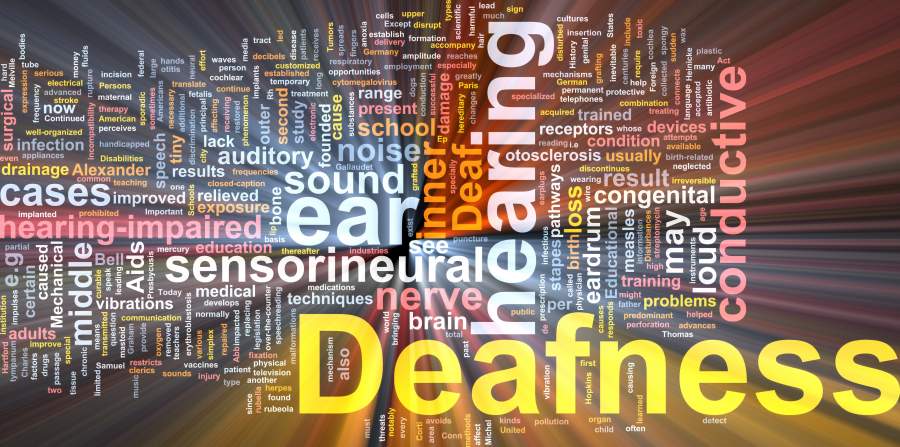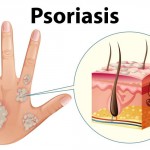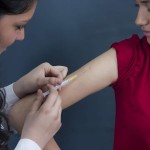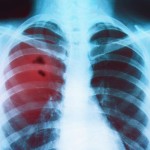Endometriosis
30-09-2014 | 1423 View(s)
Endometriosis is the abnormal growth of cells (endometrial cells) similar to those that form the inside of the uterus, but in a location outside of the uterus. It can grow in the fallopian tubes, ovaries, bladder, bowel, vagina or rectum. The uterine cavity is lined with endometrial cells, which are under the influence of female hormones. Endometrial-like cells in areas outside the uterus (endometriosis) are influenced by hormonal changes and re. Read more...
Eczema
30-09-2014 | 1437 View(s)
Eczema is often referred to as atopic dermatitis. The term eczema is broadly applied to a range of persistent skin problems. These symptoms include dryness and skin rashes that are characterized by one or more of symptoms like: Scratching Redness Flaky skin Atopic dermatitis is also known as infantile eczema, when it occurs in infants. Infantile eczema may extend into childhood and adolescence and it often involves an oozing, crusting rash. Read more...
Down’s Syndrome
30-09-2014 | 1471 View(s)
Down syndrome (DS) or Down's syndrome is also known as trisomy 21. It is a genetic disorder caused by the presence of extra chromosome 21 .It is typically associated with a delay in cognitive ability (mental retardation or MR) and physical growth and a particular set of facial characteristics. The average IQ of young adults with Down syndrome is around 50 whereas young adults without the condition typically have an IQ of 100.. Read more...
Diabetes Mellitus
30-09-2014 | 1450 View(s)
Diabetes mellitus is a group of metabolic diseases in which the person has high blood glucose (blood sugar) either due to inadequate insulin production or because the body's cells do not respond properly to insulin or both. The term "diabetes mellitus" describes a metabolic disorder of multiple etiology characterized by chronic hyperglycemia with disturbances of carbohydrate, fat and protein metabolism resulting from defects in insulin secretion,. Read more...
Dementia
30-09-2014 | 1431 View(s)
Dementia is not a single disease but a group of cognitive disorders typically characterized by memory impairment, personality changes, and impaired reasoning. Affected cognitive areas can be memory, attention, language, and problem solving. Generally, symptoms must be present for at least six months to support a diagnosis . Cognitive dysfunction of shorter duration is called delirium. The diagnosis of dementia is generally made with demonstrab. Read more...
Deafness
30-09-2014 | 1505 View(s)
As per WHO, hearing impairment is the inability to hear as well as someone with normal hearing. Hearing impaired people can be hard of hearing (HOH) or deaf. If a person cannot hear at all, then they have deafness. Hearing impairment may be inherited, or caused by diseases like maternal rubella or complications at birth, certain infectious diseases such as meningitis, use of ototoxic drugs, exposure to excessive noise and ageing. Impact of he. Read more...
Blindness
30-09-2014 | 1547 View(s)
Visual impairment is when a person has sight loss that cannot be fully corrected using glasses or contact lenses. Blindness as defined by national programme for control of blindness (NPCB) under following headings: • Inability of a person to count fingers from a distance of 6 meters or 20 feet (technical definition) •Vision 3/60 or less with the best possible spectacle correction •Diminution of field vision to 20 feet or less in bette. Read more...
Bedsores
30-09-2014 | 1423 View(s)
Bedsores are also called pressure sores or pressure ulcers.Bedsores are injuries to skin and underlying tissues resulting from prolonged pressure on the skin. Bedsores generally develop on skin that covers bony areas of the body, such as the heel, ankles, hips or buttocks. People most at risk of bedsores are those with a medical condition that limits their ability to change positions, requires them to use a wheelchair or confines them to a bed. Read more...













